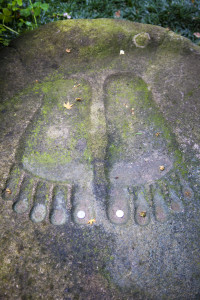Dear Integral Meditators,
This mid-week article outlines a creative meditation practice on an aspect of self that I think of as the “mirror self”. One of its main purposes is to stimulate the potential of our imaginative capacity to effect real and dynamic changes in our life.
The meditation is an example of what I have been calling a Greenworld meditation practice, so here is a final reminder of the Greenworld Meditation Workshop I will be running this Sunday 23rd February, and repeating due to demand on Sunday 2nd March.
Below the article you can find full details of the Walking Meditation that I will be running, also on the 2nd March, 8-1030am.
Finally, if the article below looks a little long for you, then you might just enjoy watching the three minute reference to the ‘mirror world’ in the third installment of Pirates of the Caribbean, in the scene entitled “up is down” ;-)
Yours in the spirit of the creative imagination,
Toby
 Meditating with the Mirror Self in the Greenworld
Meditating with the Mirror Self in the Greenworld
This is a technique for connecting to a primal and dynamic aspect of ourself that is mythic and imaginative in nature. Its purpose is to experience a new dimension of ourself that is unfettered by the habits of our conventional personality and that offers us a new level of creative participation in our world.
To say that the mirror self is mythic and imaginative in nature is not the same as saying that it has no objective reality, but it is to say that it exists within the reality of the creative imagination.
What or where is the Greenworld?
The mirror self resides in Greenworld. The Greenworld is a place that exists within the primal imagination of the planetary being and group consciousness. It is not so much a physical world so much as an energetic one. It is a place that all of us participate in to a greater or lesser degree in our dreams and imagination. However, rather than being merely a by-product of our imagination it is rather an actual place that we contact and visit through controlled and conscious use of our imagination.
It has various names in the different spiritual traditions of the world. In Celtic Greek and Roman tradition it is sometimes called the Underworld. In the Tibetan Tantric tradition (which I originally trained in extensively) it is called Dakini Land. It is said to be the land of nature spirits and spiritual beings of various sorts, as well as the land where we may find the spirit of our ancestors.
You might also say that it is a world that has been contacted by artists thru-out the ages for for imaginative inspiration.
I call it the Greenworld. I have been engaged in meditations that directly or indirectly involve it for about 15 years now, and it is a practice that I hold very dear to my heart.
What is the mirror self?
The mirror self, simply put is that aspect of ourself that resides in the Greenworld right now. Since the Greenworld does not exist within the confines of conventional time and space, you could say that our mirror self is ever present, simply waiting to be discovered by us.
The Greenworld is almost like a pure inner world that mirrors out outer world. Hence the self that we meet there we call the ‘mirror self’.
Again, you won’t gain a satisfactory experience of your mirror self by looking for rational and linear ways of connecting to it, for it is connected to by means of the creative imagination. In the integral development of consciousness rationality and the creative imagination are not seen as contradictory to each other, rather as complementary capacities that we can develop together within our consciousness.
The meditation
The meditation is rather simple:
- Sit quietly. Be aware your body-mind and bring it to a place of relative stillness by focusing on the breathing for a short while. Then focus your intention on the desire to connect to your mirror self within the Greenworld.
- Now imagine that you look down between your feet, and see there appears to be another, upside-down you beneath you. It is as if you were sitting on a mirror; the soles of your feet touch the soles of his/her feet. As you look down, s/he looks up.
- See the form of your mirror self. Likely s/he looks like you but different. Her clothes may come from a much earlier time in history. His body is solid and yet also luminous and radiant. You may notice particular colours and energies around and within her body. Notice and currents of energy that you may feel rising from your mirror self through the soles of your feet.
- Now imagine that your world ‘flips’ upside down, so that you become your mirror self. Experience yourself as your mirror self. What is it like? How does your body feel? What is the mode of thinking and feeling in your mind?
- What you are ready ‘flip’ back again and return to the outer world. Take the experiences and perspectives that you gained from your mirror self into your daily life. If you like you can keep an awareness of your mirror self by imagining him/her beneath you whenever you look down, the soles of your feet in contact with hers!
© Toby Ouvry 2014, you are welcome to use or share this article, but please cite Toby as the source and include reference to his website www.tobyouvry.com
An Introduction to Walking Meditation Workshop Date: Sunday 2nd March 2014
Date: Sunday 2nd March 2014
Time: 8.00-10.30am
Location: Singapore Botanic Gardens, meet by the steps at the Exit of the Botanic Gardens MRT next to the Nursery Gate of the Botanic Gardens (click on link above for map!)
One line summary: Learn how to practice meditation and mindfulness as a walking practice.
Overview: Increasingly many people are becoming aware of a need to find a sense of inner calm, peace and centeredness in order to cope effectively with the stresses and strains of modern life. However, it seems equally difficult to find the quality time for a practice such as meditation or mindfulness that can actually help us to accomplish this.
A solution to this can be found in walking meditation. All of us do a certain amount of walking in our life. By learning mindful walking we can combine the time that we spend walking with time spent cultivating our inner peace, stability and happiness. It is a win-win situation!
This 2.5 hour workshop will be located in the peaceful surroundings of the Botanic Gardens,
The RESULTS that you can expect to gain from engaging in this workshop are:
- Confidence in practising the basic fundamentals of walking meditation and how to integrate it into your daily routine
- Knowledge of the technical theory behind walking meditation practice
- The ability to connect to positive mind-states as well as greater levels of physical energy whilst walking
The level of this workshop: Suitable for beginners, or more experienced meditators looking to integrate mindful walking into their repertoire.
Basic Workshop Structure:
First hour: Warm up, Introduction to basic walking meditation techniques for awareness of good posture, developing relaxed concentration and inner silence/spaciousness. Time for Q&A.
Second hour: Integrating elements of thinking, feeling and imagination into walking meditation in order to generate and enhance both our physical energy as well as positive mind states. Time for Q&A
Final half-hour: Integrating awareness of nature and the natural landscape into our walking meditation in order to enhance positive energy exchange between ourself and our environment, and receive healing and balancing energy from natural elements of the landscape such as trees and water, sun and sky.
In addition the class itself you will also receive: Backup notes covering the basic meditation techniques covered in the class
Feedback from past walking meditation workshops:
1: ”The outdoor walking helped me easily connect to nature on a holistic scale and feel energized nurtured and a strong sense of belonging (perfect timing) it put things into perspective. I felt incredibly at ease and peace.”
2. ”I was amazed at how simple Toby’s steps are, and how ‘portable’ walking meditation can be as a practical, everyday energy balancer or enhancer. You can literally take it wherever you go, wherever you are …in the park, on the beach, in a busy airport, and even in the confines of your own home. An instant, private oasis of tranquillity at your feet!”
Cost of Workshop: $65 per person
CLICK HERE TO PURCHASE WALKING MEDITATION CLASS BY CREDIT CARD
To register or for further enquiries: Email info@integralmeditationasia.com, or call 65-9675027
 Imbalanced, fragmented, confused. Does that ever feel like the state of your mind? Here are three meditative methods to bring your mind from fragmentation to a state of relative balance and unity through meditation:
Imbalanced, fragmented, confused. Does that ever feel like the state of your mind? Here are three meditative methods to bring your mind from fragmentation to a state of relative balance and unity through meditation:








